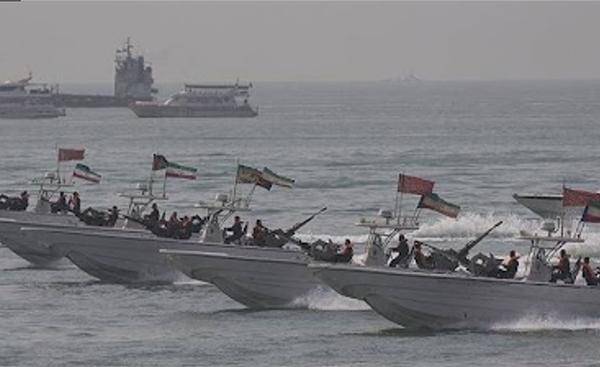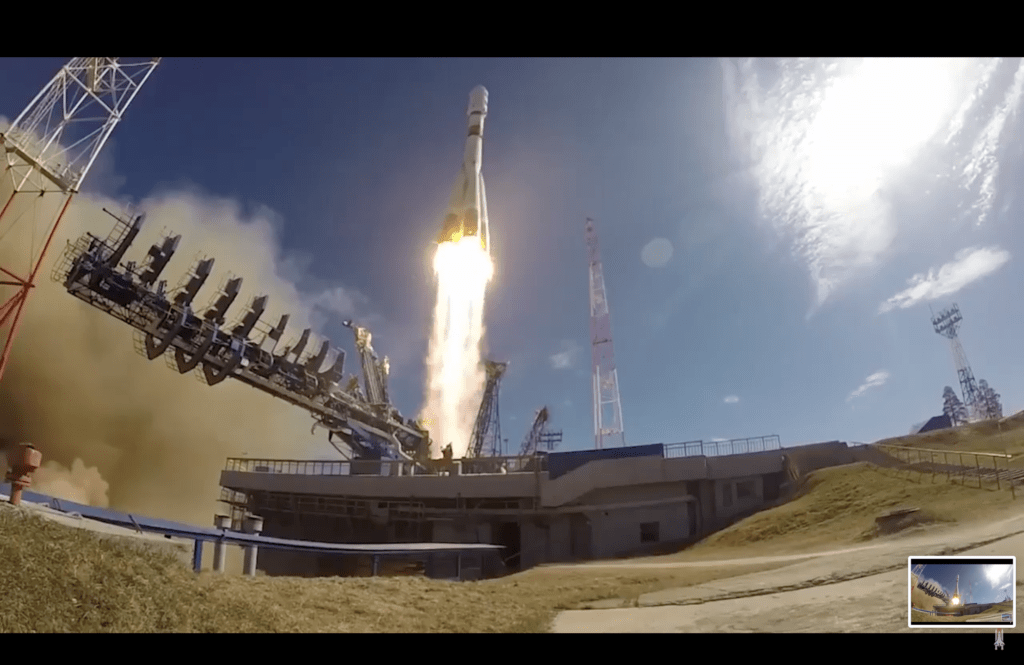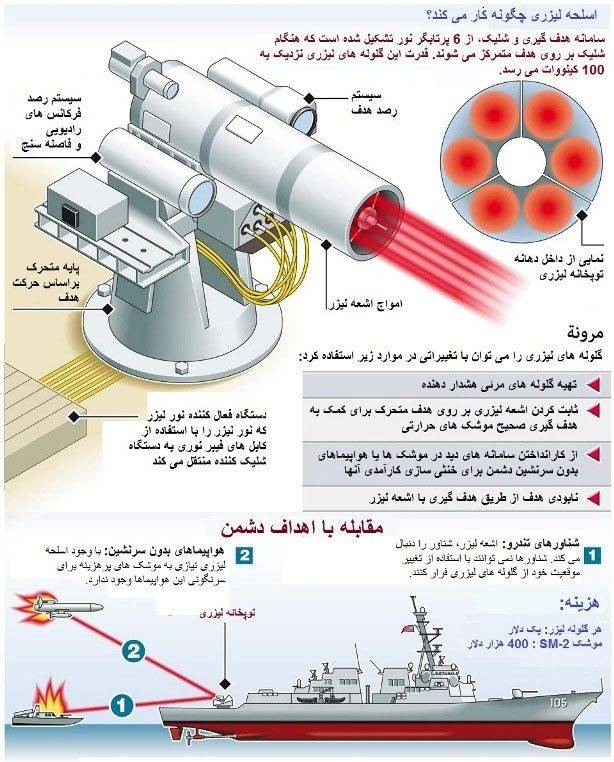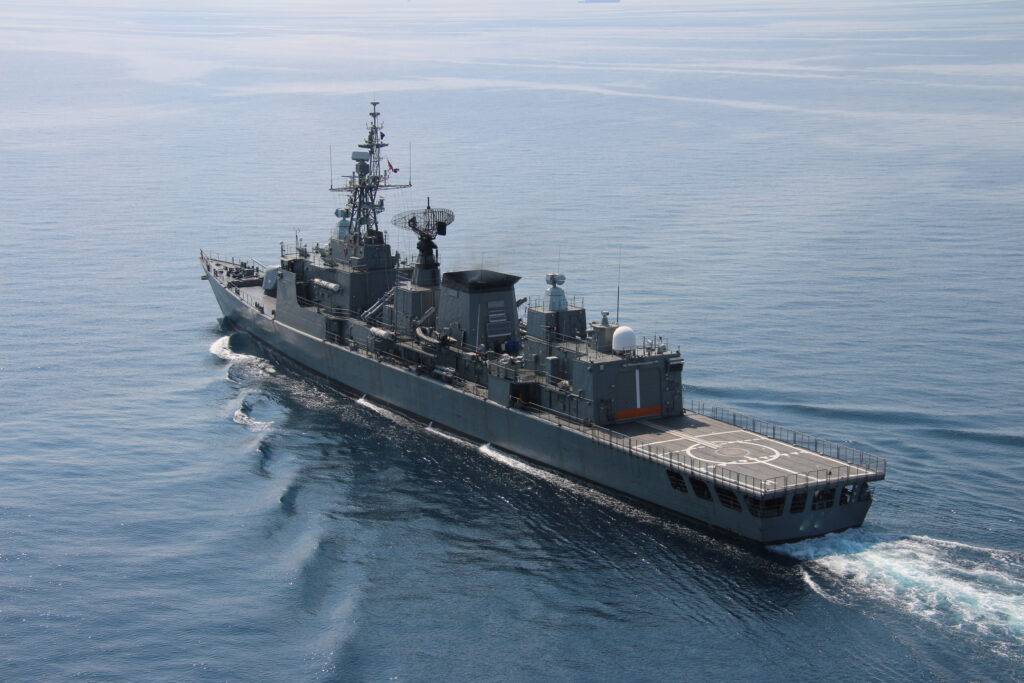Iran has significantly refined its asymmetric warfare capabilities to counterbalance its conventional military shortcomings. The country is rapidly expanding its naval and military reach well beyond the Persian Gulf, acquiring new submarines, destroyers, and speedboats. Iran’s ambitions now extend to strategic areas such as the Red Sea, Antarctica, and even into space.
Since the 2011 Arab Spring, Iran has increasingly shifted toward an offensive military doctrine, heavily influenced by internal political disputes between the Islamic Revolutionary Guards Corps (IRGC) and the reformist camp represented by President Hassan Rouhani.

This shift, known as the “forward defense” doctrine, involves adopting hybrid warfare strategies to combat threats outside Iran’s borders, thus preventing conflicts within. The doctrine marks a departure from Iran’s previous defensive approach and includes the use of proxies, drones, cyber warfare, and naval guerrilla tactics. This evolution is driven by regional upheaval and the IRGC’s growing influence within the Iranian political landscape, leading to a setback in the civilianization of the Iranian state. The doctrine’s implementation has been supported by IRGC-led operations in Syria, Iraq, and Yemen, and reflects the IRGC’s dominant role in shaping Iran’s foreign and military policies.
Eyeing the Antarctic
Iran has expanded its strategic presence beyond the Gulf to include regions such as Yemen, the Indian Ocean, and the Red Sea. The Tehran regime is striving to establish a permanent naval presence across the world’s oceans, enabling it to conduct transcontinental military operations. Furthermore, Iran is eyeing the resource-rich Antarctic region. Earlier in 2024, Yahya Rahim-Safavi, a military adviser to Iran’s Supreme Leader Ali Khamenei, emphasized the necessity of deepening Iran’s defense and security reach. He noted that Iran’s strategic defense depth lies in the Mediterranean Sea and called for extending this depth by 5,000 kilometers.
The Iranian regime recognizes the strategic importance of maritime power in achieving global influence. After rejecting the 1982 Convention on the Law of the Sea, which it viewed as restrictive to its goals, Tehran began to expand its naval capabilities. Instead of directly competing with Western navies, the IRGC Navy (IRGC-N) focuses on developing an asymmetrical military strategy aimed at disrupting the established global maritime order.
This focus on unconventional tactics include the use of small, fast attack boats, mines, and anti-ship missiles. It uses asymmetrical warfare to challenge and disrupt established naval powers. This strategy includes harassment, electronic warfare, and espionage to create pressure in strategic regions like the Red Sea and the Gulf of Aden.
Electronic warfare, including the deployment of unmanned underwater and surface vehicles, also plays a significant role in Iran’s naval strategy. These technologies are utilized for intelligence gathering, reconnaissance, and disrupting adversaries’ communications, enhancing Iran’s ability to operate effectively in contested environments.
Missile and Drone Capabilities
Iran has developed one of the most extensive and diverse missile arsenals in the Middle East, including ballistic, cruise, and anti-ship missiles. This arsenal includes missiles capable of reaching targets up to 2,000 kilometers away, covering all of Israel and much of the Arabian Peninsula. The advancement of precision-guided munitions and drones further enhances Iran’s ability to conduct long-range strikes and engage in asymmetric warfare.
The IRGC has also prioritized integrating drones into its military operations, utilizing them for surveillance, attacks, and electronic warfare. Iranian drones have been deployed in conflicts across the region, from Syria to Yemen – not to mention in the Ukraine War by the Russian – demonstrating their versatility and effectiveness. This capability allows Iran to support its proxies and allies remotely, providing intelligence and direct firepower without risking Iranian personnel.
Chemical and Biological Weapons
There is much international emphasis on Iran’s nuclear program. But it is often overlooked, that Iran is already recognized as a chemical weapons power. It possesses the technical capabilities necessary to develop advanced biological weapons. Iran is able to exert influence across the Middle East, deter larger military powers, and complicate the strategic calculations of its adversaries, particularly the United States and its allies in the Gulf.
It’s no surprise that the wealthiest petroleum-exporting nations in the Gulf—Kuwait, Qatar, Saudi Arabia, and the UAE—are allocating substantial portions of their GNP to national security, with some spending nearing 10 percent. This trend is also observed in a less affluent state, Oman.
Iranian Satellites Raise Concern

In February 2024, Russia reportedly helped Iran launch a satellite from a Russian site. By September, Iran claimed to have used its own space launch vehicle (SLV) to place a military satellite in orbit. In January, Iranian officials stated they had successfully launched multiple satellites in a single mission for the first time.
Iran’s recent SLV activities and its alleged ability to deploy multiple satellites are concerning for several reasons. Firstly, the technology used in SLVs is closely related to that required for intercontinental ballistic missiles (ICBMs), potentially shortening the timeline for Iran to develop an ICBM capability. Secondly, the reported use of solid-fuel propellants in these SLVs makes it more difficult to detect and prepare for missile launches, as they require less preparation time compared to liquid-fuel missiles. Thirdly, Iran’s satellite program could enhance its ability to conduct proxy attacks by improving its intelligence-gathering capabilities, reportedly with help from Russian satellite technology.
From Cyber to Laser

The IRGC has developed notable cyber capabilities, targeting the infrastructure and military assets of its adversaries. These operations span from espionage and data theft to disruptive attacks on critical infrastructure, particularly in the oil and gas sectors. Already in 2012, Iran established the Joint Chiefs of Staff Cyber Command to focus on its cyber operations. The latest headlines on its capabilities came out in the summer of 2024, as a suspected Iranian cyberattack targeted the campaign of Republican presidential nominee Donald Trump, possibly leading to the theft of internal campaign documents. The FBI is currently investigating this incident, as well as other attempts to infiltrate the reelection campaign of President Joe Biden, which transitioned to Vice President Kamala Harris’ campaign after Biden withdrew from the race.
Avoiding Full-scale War
Once again, tensions are on the rise in the Middle East. Thus far, Iran, the U.S., and their Gulf partners have steered clear of escalating conflicts into full-scale wars, instead favoring hybrid tactics, gray zone activities, and strategic power maneuvers to exert influence. This strategy encompasses political maneuvering and low-level skirmishes that have become a hallmark of Gulf geopolitics. The uninterrupted flow of oil and natural gas remains the critical underlying factor.
However, indirect routes to conflict still abound. The Kurdistan autonomous region, where Iraq has frequently used missiles and drones to target the Israel-affiliated Kurds, labeling it an Israeli ‘spy base,’ is one potential flashpoint. Iran is also reportedly considering cyber attacks against Israel as they consider their response to Ismail Haniyeh’s assassination in Tehran.
As for traditional full-scale war, any attempt to invade or occupy Israel, Iran, or Saudi Arabia would likely result in a Pyrrhic victory at best, offering no substantial or lasting gains for the conqueror.
Iran’s asymmetric warfare
- Advanced Missile Systems
One of the most notable developments within the IRGC-N has been the deployment of advanced missile systems, particularly the Qadeer cruise missile and the Fatah 360 ballistic missile. These systems were prominently displayed during a 2023 military exercise near Abu Musa Island in the Persian Gulf. The Qadeer cruise missile, with a range of 330 kilometers and a 200-kilogram payload, exemplifies Iran’s capability to strike targets at considerable distances. The Fatah 360 ballistic missile further extends Iran’s strike reach, allowing the IRGC-N to engage enemy forces and strategic assets far beyond its immediate coastal waters.
These missile systems are crucial for Iran’s “area denial” strategy, which seeks to deter or counter the presence of foreign naval forces in the Persian Gulf and the Strait of Hormuz. By deploying such missiles on mobile platforms, including ships, the IRGC-N can threaten adversaries’ vessels even beyond the immediate confines of Iranian territorial waters. - Unmanned Aerial and Maritime Systems
Iran has increasingly turned to unmanned systems to enhance its naval capabilities without the need for large, conventional naval forces. The IRGC-N has developed a variety of Unmanned Aerial Vehicles (UAVs) and Unmanned Surface Vehicles (USVs). These systems are designed for a range of missions, including intelligence gathering, surveillance, electronic warfare, and direct combat.
– UAVs: The IRGC-N has integrated drones extensively into its naval operations. These drones are capable of long-range surveillance and can carry precision-guided munitions, making them formidable assets for asymmetrical warfare. They are often used to monitor enemy movements, gather intelligence, and, when necessary, launch surprise attacks.
– USVs: The IRGC-N’s use of unmanned surface vessels is another critical aspect of its disruptive strategy. These vessels, which can be equipped with explosives, serve as a cost-effective means of threatening or attacking larger, more expensive enemy warships. The evolution of these systems from the Ariana prototype unveiled in 2012 to more sophisticated models reflects Iran’s commitment to enhancing its unmanned maritime capabilities. - Electronic Warfare and Cyber Capabilities
Electronic warfare (EW) is a key component of the IRGC-N’s strategy to disrupt the operations of technologically superior adversaries. Iran has developed various systems capable of jamming and disrupting enemy communications, navigation, and weapon systems.
– Electronic Jamming: The IRGC-N has reportedly developed the capability to disrupt the navigation systems of vessels operating in the Persian Gulf. In 2021, several ships in the Gulf of Oman reported malfunctions in their navigation systems, which were suspected to be the result of Iranian electronic jamming efforts. Such capabilities are vital for creating confusion and disrupting the operational effectiveness of adversary forces
– Cyber Warfare: Iran’s cyber capabilities have been increasingly linked to the IRGC, particularly through covert units like Mint Sandstorm. This group is suspected of targeting critical infrastructure, including seaports and energy facilities, through cyberattacks. In a potential conflict, these capabilities could be used to disable enemy logistics and communications systems, giving the IRGC-N a significant tactical advantage. - Laser Weapon Systems
Iran has made strides in developing laser weapon systems designed to disrupt and damage enemy aircraft and missiles. The Zahir laser weapon, unveiled in 2022, is an example of this technology. It is equipped with an image detector and is capable of engaging aerial targets such as drones and cruise missiles using a powerful laser. The deployment of such systems allows the IRGC-N to engage and potentially neutralize enemy threats at relatively low cost compared to traditional missile systems. These laser weapons can also be used to blind or damage the optical and electronic systems of enemy aircraft, as was reportedly attempted against a U.S. AH-1Z Viper helicopter in 2023. - Converted Vessels and ‘Bazaar Ships’
Facing economic sanctions that limit its ability to acquire new ships, Iran has creatively repurposed commercial vessels into military assets, known as “bazaar ships.” These vessels, such as the Shahid Mahdavi, have been converted to carry a wide range of military equipment, including drones, missiles, and anti-aircraft guns. The Shahid Mahdavi, for instance, has been fitted with a drone runway on its foredeck, allowing it to operate UAVs far from Iran’s shores. These converted vessels serve as mobile bases, extending the IRGC-N’s reach and enabling it to project power across vast maritime areas. The ability to operate these ships in international waters while maintaining a relatively low profile is central to Iran’s asymmetrical maritime strategy. - Satellite Communications and Reconnaissance
The IRGC-N’s ability to conduct long-range operations is significantly enhanced by Iran’s growing satellite capabilities. The Noor-III satellite, launched in 2023, provides the IRGC-N with real-time imaging and intelligence capabilities. This satellite, part of a broader constellation Iran is developing, enables the IRGC-N to monitor enemy movements, coordinate operations, and guide missile strikes with greater precision. Iran’s investment in satellite technology underscores its intention to become a major player in space-based reconnaissance and communications, further enhancing its asymmetrical warfare capabilities. - Boarding and Seizure Tactics
The IRGC-N has also demonstrated a willingness to engage in aggressive boarding and seizure operations. These tactics serve both as a means of direct confrontation and as a tool for exerting political pressure. The 2019 seizure of the British-flagged Stena Impero and the 2023 hijacking of the MV Asphalt Princess highlight Iran’s capability and willingness to detain foreign vessels under various pretexts.
These operations are often justified on administrative grounds, such as alleged violations of maritime law, but they also serve as leverage in broader geopolitical negotiations. The threat of such boardings adds a layer of unpredictability to maritime operations in the region, forcing foreign navies and commercial shipping companies to exercise extreme caution when operating near Iranian waters. - Ballistic Missile Launches from Naval Platforms
In a significant escalation of its maritime capabilities, the IRGC-N has begun testing the launch of ballistic missiles from shipping containers aboard converted vessels like the Shahid Mahdavi. This tactic, which was showcased in a 2024 video release, represents a new dimension of the IRGC-N’s threat profile. The ability to launch ballistic missiles from mobile maritime platforms greatly increases Iran’s strike range and complicates efforts to counter its missile capabilities.
This innovation allows the IRGC-N to potentially strike targets from unexpected locations, making it more difficult for adversaries to predict and neutralize missile threats. It also underscores the versatility and ingenuity of Iran’s military strategy, which seeks to leverage its existing assets in novel ways. - Maritime Sabotage and Underwater Capabilities
Iran has also been implicated in acts of maritime sabotage, such as the cutting of undersea data cables in the Red Sea in 2023. These incidents, which disrupted significant portions of global internet traffic, highlight Iran’s ability to conduct covert operations that have far-reaching consequences.
Additionally, the IRGC-N’s development of Unmanned Underwater Vehicles (UUVs) represents a growing threat to both commercial and military vessels. These UUVs can be used for mine-laying, surveillance, and potentially offensive operations against enemy ships. The increasing sophistication of these underwater drones suggests that Iran is preparing for a future where underwater warfare plays a crucial role in its maritime strategy. - Espionage and Intelligence Support
The IRGC-N’s use of converted cargo vessels as spy ships, such as the MV Behshad, is a critical element of Iran’s maritime intelligence-gathering efforts. These vessels are equipped with advanced surveillance and communications equipment, enabling them to monitor enemy movements and relay targeting information to Iranian forces and their allies, such as the Houthis in Yemen.
The deployment of such vessels in strategic locations like the Gulf of Aden allows Iran to maintain a constant surveillance presence, providing real-time intelligence that can be used to coordinate missile and drone attacks on enemy targets.
Read More:
- Middle East Institute: Upgrading Iran’s Military Doctrine: An Offensive “Forward Defense”
- CSIS: Iran and the Changing Military Balance in the Gulf
- Washington Institute: Iranian Military Developments and Trends
- Frstrategie: The IRGC Navy’s long-term strategy of asymmetrical warfare
- CRS Reports: Iran: Background and U.S. Policy
- Foreign Affairs: Iran’s New Naval Ambitions As Tehran’s Maritime Power Rises, Washington Must Step Up to Secure the Seas
- RUSI: Iran’s Military Strategy – Stick or Twist?
- NPR: What Iran’s military strategy can tell us about the war
- AP News: Iran launches 3 satellites into space that are part of a Western-criticized program as tensions rise
- European Council: Iran – Council broadens EU restrictive measures in view of Iran military support of Russia’s war of aggression against Ukraine and armed groups in the Middle East and Red Sea region
- IISS: Iran and Israel: everything short of war
- AEI: The Emerging Iranian Military Threat in the Middle East
- New York Times: A Look at Iran’s Military Capabilities
- USNI News: Iranian Forces Harass Marine Attack Helo with Laser in Persian Gulf
- The Jerusalem Post: Iran has ten ways to attack Israel; which one will it choose? – analysis
- AP News: What we know about suspected Iranian cyber intrusion in the US presidential race
- Defense News: Iran seeks to grow naval power as it prioritizes asymmetric warfare
- Defense News: Bolster sanctions to stop Iran’s growing military space capabilities
- Defense News: What we know about Iran’s counter-space weapons
- IranWire: Exclusive: Iran’s Delayed Revenge May be Cyber-Attacks to Paralyze Israel



